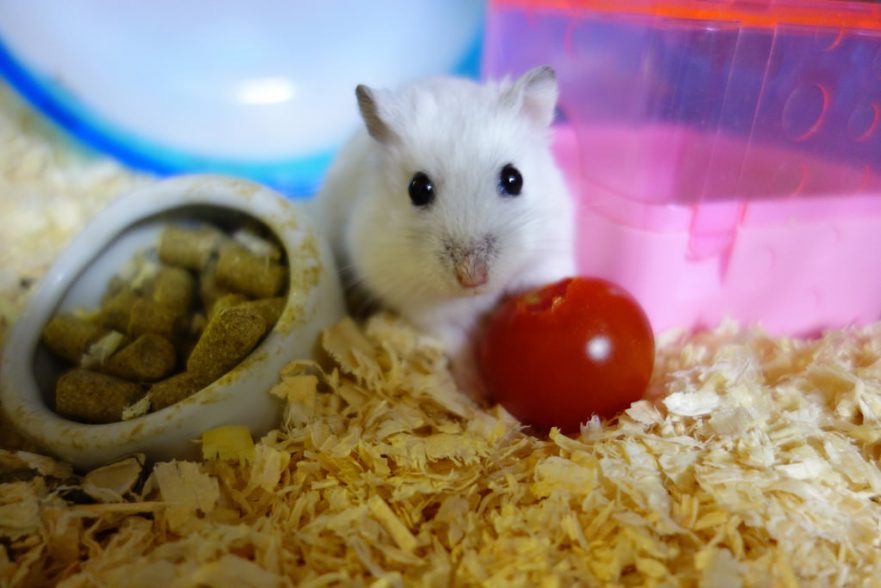When you take a new hamster home, you’ll need a number of different supplies ready to go to keep your new pet healthy. From hamster cages and food to bedding and chew toys, it’s important to make sure you’re well prepared for your new hamster.
We’ve created a checklist that includes all the hamster supplies you need for your new pet, including both essential and non-essential items.
Hamster Supplies Checklist (With Prices)
Here is our list of hamster supplies to purchase before bringing your new pet home. Once you have everything below, you’re all set!
Essentials:
- Suitable hamster cage (more on this later)
- Suitable bedding and substrate material
- Hamster home(s) (nesting area)
- Food bowl(s)
- Water bottle
- Toys for enrichment (climbing frames, tunnels, wheels, etc.)
- Chew toys
- Exercise wheel
- Exercise ball
- High-quality food mix
- Hamster treats
- Non-toxic cleaning products
- Fresh fruit and vegetables
Total estimated cost = $115
Non-Essential (but still useful):
- Gnawing blocks or sticks
- A ladder or climbing frame
- Plastic tubes
- Litter scoop
- Travel cage
- Sand bath & hamster bathing sand
Total estimated cost = $50
Below we’ll go into more detail on some of the more important hamster supplies, including top tips and potential problems to watch out for.
Hamster Supplies Checklist (With Prices)
It’s important to choose a spacious hamster cage that has plenty of room for your new pet to run and play. If you plan on keeping multiple dwarf hamsters in one cage, you will of course need a slightly bigger cage to house a collection of animals.
Important: If you’re keeping dwarf hamsters, be careful when using wire-top cages (pictured below). Sometimes the spacing between the metal wires is too wide and dwarf hamsters can actually squeeze between them! You’re looking for a spacing of around 1cm.
The Savic Hamster Heaven - Our Favourite Hamster Cage
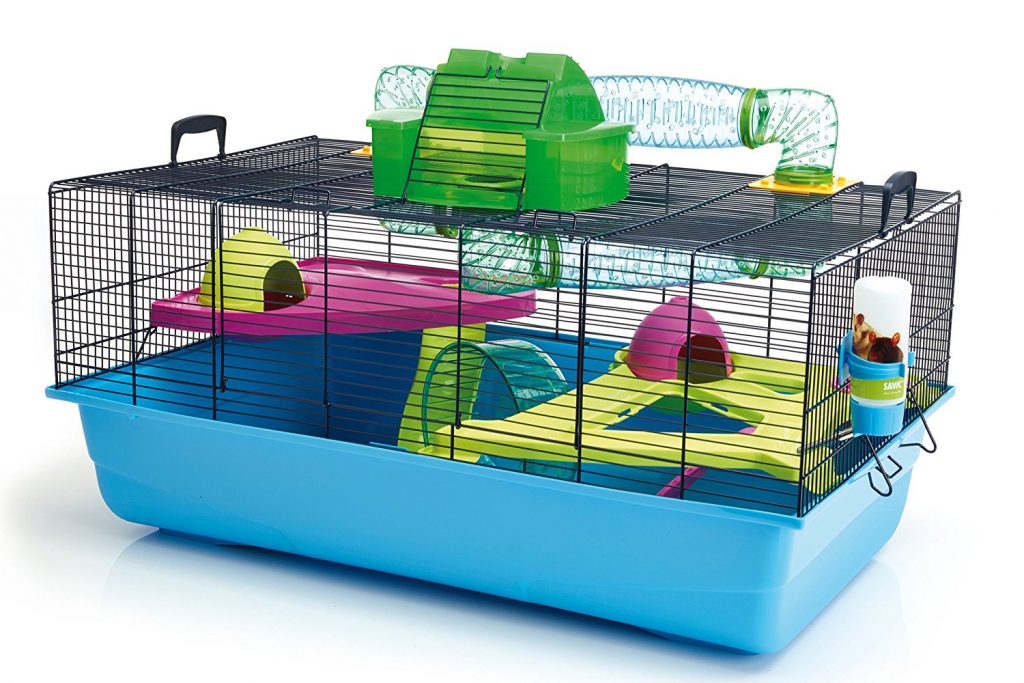
This is probably the best hamster cage you can buy today. It provides plenty of room for your hamster to explore and is capable of holding a small group of Robos. Lots of accessories are included with the set while being easy to assemble and clean – click here for more details on the Savic cage.
Ferplast Hamster Cage - A Great All-Rounder
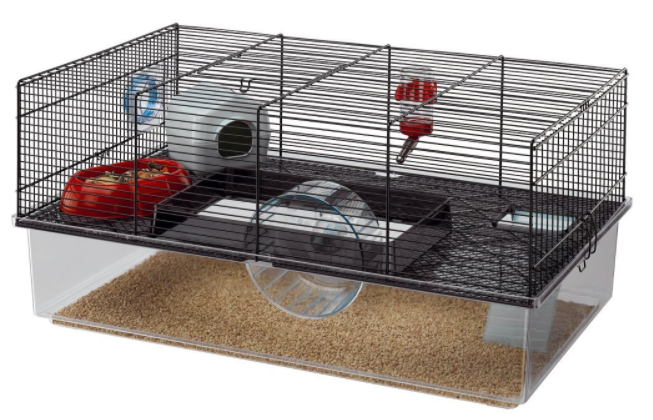
This Ferplast hamster home is a great all-rounder and should be a perfect solution for the majority of hamster owners. The main benefit of this cage is its bottom section which promotes natural behaviours in your pet, allowing them to burrow and bury their favourite foods!
Choosing Your New Hamster
There are a few different types of hamster, all of which grow to different sizes and have slightly different care requirements. If you want to keep two or more hamsters, you’ll want to keep a species of dwarf hamster. The larger Syrian hamster must be kept alone.
Dwarf hamsters are often more energetic and entertaining to watch although that does make them slightly harder to handle (it just takes some practice).
Here are the different hamster options available to you:
Bedding & Substrate
A substrate is the material used to cover the bottom of your hamster cage. This is usually wood shavings or some form of soft material such as CareFresh. A substrate will keep your cage clean, absorb odor/waste and provide a soft surface for your pet.
Hamster bedding is the nesting material used by your hamster to create a comfortable place to sleep. Bedding is usually a softer material than substrate and will be kept in the hamster home/hide within your cage.
There is a huge range of different substrate and bedding materials out there. Sawdust is not recommended as it can cause breathing issues in your pet (due to the dust sawdust creates). We recommend to go for a reputable brand and use a material such as wood shavings for the substrate with a material like CareFresh for bedding.
Here is everything you need to know on bedding and substrate.
Food Bowls & Water Bottles
Food bowls and water bottles are an absolute must for your cage. A food bowl tells your pet it has a reliable source of food and your hamster may end up waiting next to the food bowl when it’s nearly feeding time!
When keeping multiple hamsters, meal time can be the #1 cause of aggression. That’s way it’s great to purchase a couple of different food bowls, hamsters get pretty protective over their food! A water bottle that fixes to your cage should also be a priority purchase, your hamster will need fresh water daily.
What Hamster Toys Should I Get?
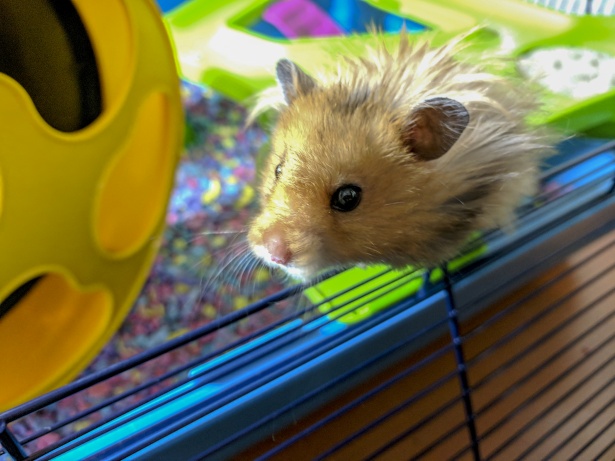
It can be hard to choose some good hamster toys as there are so many options out there! Try to pick up a variety of toys for your pet, you can always swap toys in and out to keep your pet amused and interested in its surroundings.
Here are some toys we recommend picking up:
- Exercise wheel
- Exercise ball
- Climbing frame (hamsters love to climb!)
- Swings
- Ladders
- Tunnels
- Balls
- Chew toys
Why Do Hamsters Need Chew Toys?
Chew toys are a must for your hamster because a hamster’s teeth will never stop growing throughout its whole life! That means they need to grind their teeth down using chew toys to keep them sharp and at a safe length.
Exercise Wheel Vs. Flying Saucer
Exercise is massively important for hamsters. In the wild, they will run for miles and miles every night! Allowing your hamster to let off some steam via an exercise wheel or a flying saucer makes for a happy and healthy pet.
Exercise wheels are generally preferred over saucers amongst the hamster owner community because they provide a more natural way for a hamster to run. Just make sure your pet doesn’t have a curved spine when running, as that means the wheel is too small. Also, some hamsters can get trapped in wheels that have small spaces or holes so try to avoid those if possible.
Hamster Exercise Balls
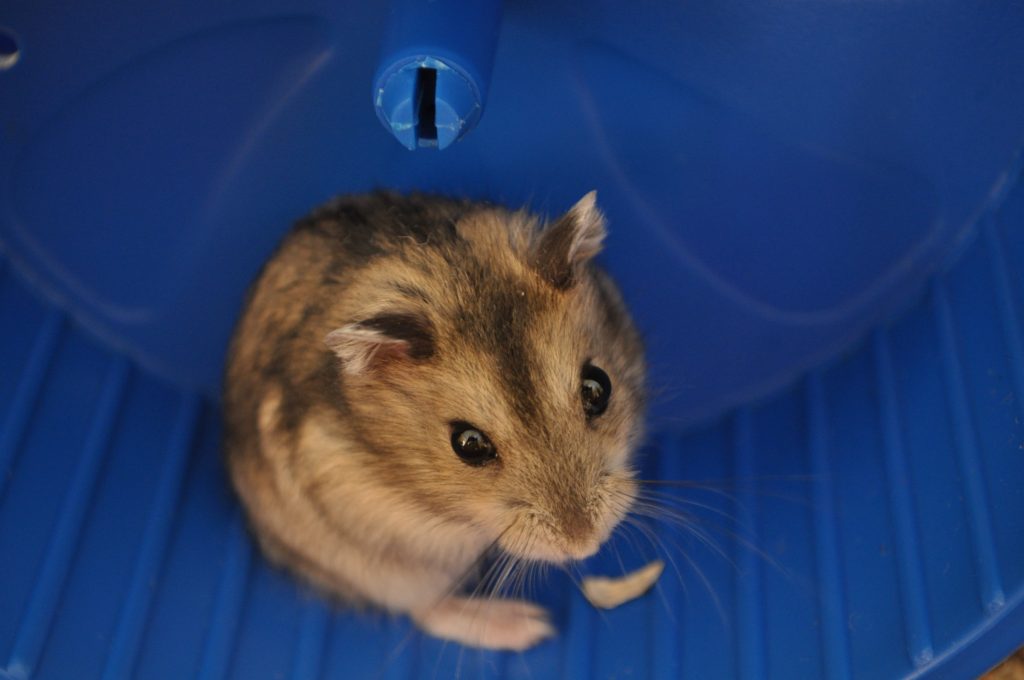
An exercise ball let’s your hamster run and explore a whole room without any boundaries! Hamster balls are great for allowing your pet to release some energy while also feeding its natural curiosity.
Hamster balls also come in handy when completing a weekly cage clean. Just place your hamster in the ball, make sure the lid is secure and you’re free to clean the cage without worrying about your hamster getting in the way.
Choosing a hamster food mix and healthy treats
Before bringing a new hamster home, you’ll need plenty of food and treat supplies at the ready. A healthy hamster mix for daily feeding is your best bet, supplemented with the odd treat here and there.
You’ll need to feed around a tablespoon of hamster food per hamster per day. Also, feel free to add fresh fruit and veg to your hamsters diet – they can even eat mealworms!
Here’s a complete hamster feeding guide if you’d like any more info.
Important Note: Dwarf hamsters are prone to diabetes so it’s important to feed any high-sugar treats sparingly.
Hamster-safe fresh fruit and vegetables:
- Apple (no seeds)
- Banana
- Blackberry
- Blueberry
- Cantaloupe
- Coconut
- Cherry
- Grapes (seedless)
- Guava
- Honeydew
- Lychee
- Mango
- Melon
- Papaya
- Peach
- Pear
- Plum
- Raspberry
- Strawberry
Toxic and unhealthy foods:
- Almonds
- Avocado
- Apple seeds
- Chocolate
- Watermelon
- Jam
- Onions
- Leeks
- Garlic
- Junk foods
- Rhubarb
- Pork
Non-toxic cleaning products
When it comes to cleaning, you’re going to need an animal-safe disinfectant spray to remove any harmful bacteria. Most pet stores have these for sale but there are also some good options on Amazon.
Non-essential items (but still useful):
Should I Get A Carry Cage?
A hamster travel cage (or carry cage) can be useful if you’re going to be moving your hamster around quite often or if you plan on moving home anytime soon. They are also really handy if you ever need to take your hamster to the vets, you don’t want to be lugging a big cage around!
While not essential for a new hamster, you may want to pick up a carry case when you have the need for one.
What About A Sand Bath?
While hamsters groom themselves regularly and don’t require any regular cleaning, they do love a sand bath! A sand bath is a small container for your hamster to jump in and rub against to remove dirt from its coat. It’s pretty entertaining to watch! Again, a sand bath isn’t essential for your pet but it will enjoy the odd bath from time to time if you’re able to provide it.
Consider Getting Hamster Tubes
In the wild, hamsters live in narrow burrows on the desert floor. These burrows can have multiple exits and can become quite complex as a hamster grows. Providing your hamster with tubes will help mimic this natural behaviour and can help make your pet feel more at home in its new environment.
Hamster Climbing Toys
Hamsters are impressive natural climbers and really appreciate a small climbing frame in their cage to play with. Chinese hamsters in particular are very effective climbers due to their lobger tail.
What Not To Get Your Pet Hamster (List)
We’ve covered all the best supplies for a new hamster, but what items should you avoid getting for your new hamster? Here is a list of common hamster products that should be avoided due to health, injuries or other concerns that can impact a hamster’s quality of life.
- Scented substrate/bedding – some scented materials can lead to respiratory problems in hamsters
- High sugar treats – feeding your pet too many high-sugar treats can lead to diabetes (hamsters are prone to this) and other digestive issues
- Cages with a small surface area – there are now a number of ‘small animal enclosures’ on the market and while they look fun, they actually provide little space for your pet to run and exercise
- Wheels with holes – exercise wheels with holes can often lead to injuries
- Tunnels with small holes – Some tunnel toys will be designed for dwarf hamsters instead of the bigger Syrians, always ensure any holes are spacious enough for your pet to easily crawl through – you don’t want to be dealing with a stuck Syrian!
- Transparent hamster homes/nesting areas – your hamster’s sleeping area should be a place of privacy for your pet to relax
Hopefully our checklist was useful and you now have a great idea of the hamster supplies you need to create the perfect home for your new animal! Feel free to browse some of the other posts below and feel free to get in touch if you have any questions.
